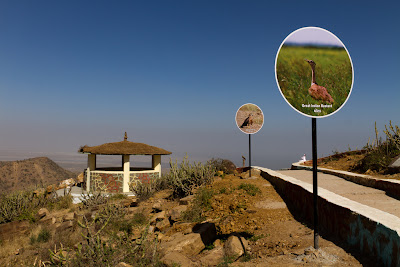anpatipule is a small town situated in the state of Maharashtra. It lies in Ratnagiri District to the south of Chiplun town. The origin of the name of the town lies in mythology. According to legend, God Ganpati took offence to a lady’s remark and moved a few km away from Gule, which was His original abode. The movement of a few km is called ‘pule’ in Marathi and thus came the name Ganpatipule.
The town has a 400 year old statue of Ganpati. This is said to have originated from the ground by itself. This statue of Ganpati, unlike statues in other temples, faces West to guard the town against the evil western forces.
Although pilgrimage forms the major tourist attraction of Ganpatipule, of late, a number of resorts have also come up here which has led to a major boost in the region’s tourism. The town’s location on the Konkan Coast makes it an ideal place for beach lovers.
The beaches of Ganpatipule are clean and lined with mangroves and coconut palms. The climate of Ganpatipule, like most of Maharashtra, is moderate. The temperature stays the same through the year, hovering at about 30-35° Celsius. However, the months of November to February experience the most pleasant weather which is also the peak season to visit Ganpatipule.
Apart from being a pilgrimage centre and a beach place, Ganpatipule is also the gateway to a number of tourist spots around the region. The town lies close to Velneshwar, Ratnagiri, Pawas and Jaigad Fort, all of which are important tourist destinations.
The town has a 400 year old statue of Ganpati. This is said to have originated from the ground by itself. This statue of Ganpati, unlike statues in other temples, faces West to guard the town against the evil western forces.
Although pilgrimage forms the major tourist attraction of Ganpatipule, of late, a number of resorts have also come up here which has led to a major boost in the region’s tourism. The town’s location on the Konkan Coast makes it an ideal place for beach lovers.
The beaches of Ganpatipule are clean and lined with mangroves and coconut palms. The climate of Ganpatipule, like most of Maharashtra, is moderate. The temperature stays the same through the year, hovering at about 30-35° Celsius. However, the months of November to February experience the most pleasant weather which is also the peak season to visit Ganpatipule.
Apart from being a pilgrimage centre and a beach place, Ganpatipule is also the gateway to a number of tourist spots around the region. The town lies close to Velneshwar, Ratnagiri, Pawas and Jaigad Fort, all of which are important tourist destinations.
The small town of Ganpatipule is well connected to the city of Ratnagiri by road. Ratnagiri has an airport and a railway station which connects it to major Indian cities. It lies approximately 30 km from Ratnagiri and the journey by road takes about an hour.
Tourist places in Ganapatipule
There are several sightseeing options in the region of Ganapatipule, most of which are shrines and temples. Jaigad lighthouse was built in the year 1832 and is located in the western edge of Jaigad Fort. The lighthouse is around 180 years old and is open to the public six days a week, excepting Sundays.
The Swayambhu Ganpati Temple is also one of the popular places of religious importance, which houses an idol made of pure white sand. There is another idol of Lord Ganesha, made of copper that depicts the god on a lion. The temple is about 20 km from the Ratnagiri region.
The Ganapatipule Temple is known for its unique interior design compared to other temples as the deity of the temple faces west unlike other Indian temples wherein the deity faces the east direction. Because of the numerous temples and shrines located here, there has been a constant rise in the number of visitors in Ganapatipule.
The Swayambhu Ganpati Temple is also one of the popular places of religious importance, which houses an idol made of pure white sand. There is another idol of Lord Ganesha, made of copper that depicts the god on a lion. The temple is about 20 km from the Ratnagiri region.
The Ganapatipule Temple is known for its unique interior design compared to other temples as the deity of the temple faces west unlike other Indian temples wherein the deity faces the east direction. Because of the numerous temples and shrines located here, there has been a constant rise in the number of visitors in Ganapatipule.













